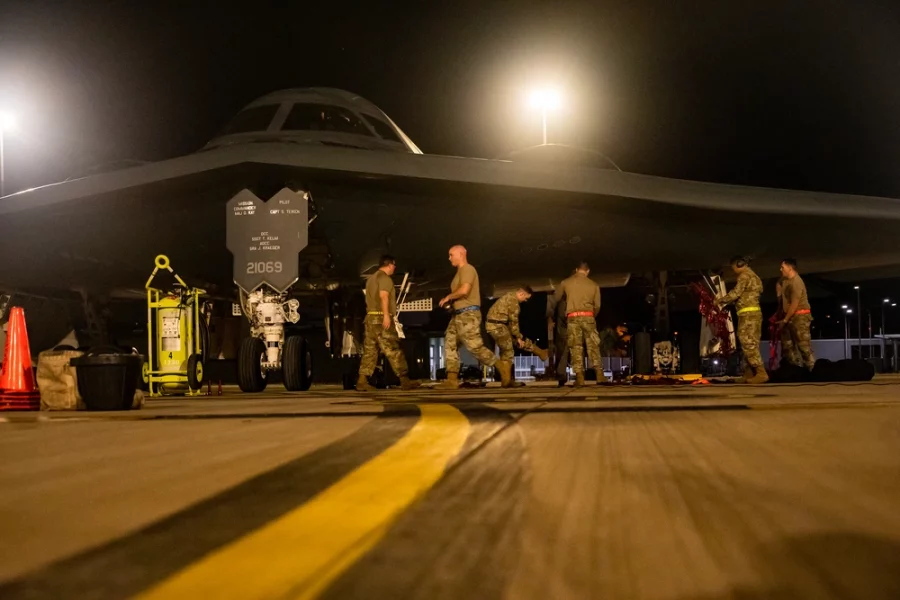Three B-2 stealth bombers landed at Royal Australian Air Force Base Amberley this weekend to begin a Bomber Task Force deployment—showcasing U.S. presence in the region and conducting exercises with allied nations. The bombers were accompanied by two KC-135R tankers from the Illinois National Guard.
The last time B-2s were in Australia was in the summer of 2022. More recently, the stealth bomber deployed to the Indo-Pacific earlier this summer, landing in Guam for the first time in five years.
Neither Air Force Global Strike Command nor Pacific Air Forces announced how long the trio of B-2s will stay in Australia, but Bomber Task Forces typically last two to three weeks, with training events with allies in the area to practice interoperability and secondary deployments to other locations to gain experience operating from airfields unaccustomed to supporting a bomber presence.
The B-2 deployment is just the latest display of U.S. airpower in the region. Last week, Air Force F-22 stealth fighters deployed to Brunei, Indonesia and the Philippines, making a similar show-of-force in the region. All three countries have long-simmering disputes with China over boundaries in the South China Sea.
The deployment was not announced in advance, but Defense Secretary Lloyd J. Austin did hint at it earlier this month after the U.S.-Australian defense ministerial conference.
“We’re increasing the presence of rotational U.S. forces in Australia” Austin said at the time, to include “more maritime patrol aircraft and reconnaissance aircraft operating from bases across northern Australia. It will also mean more frequent rotational bomber deployments.”
RAAF Amberley is on Australia’s east coast, near Brisbane.
Pacific Air Forces released a statement saying the bombers are from the Active-Duty 509th Bomb Wing and Guard 131st Bomb Wing, both of Whiteman Air Force Base, Mo. A video posted by the DOD identified two of the aircraft as being the Spirit of Arizona and Spirit of Indiana, both from the 393rd Bomb Squadron.
A third B-2 arrived later, according to an Air Force official, and was not immediately photographed or identified by the DOD. PACAF did not say how many Airmen traveled to Australia to support the task force.
“This deployment is in support of Pacific Air Forces’ training efforts with allies, partners, and joint forces and strategic deterrence missions to reinforce the rules-based international order,” PACAF said.
The last time B-2s deployed to Australia was in July 2022, when they also operated from RAAF Amberley. The bombers took part in the bilateral “Koolendong 22” exercise and conducted drills with Australian F-35As.
The RAAF’s F-35As also exercised with B-2s at Nellis Air Force Base, Nev., in January, when both types participated in a Red Flag exercise. That event marked the first time RAAF F-35As participated in a Red Flag at Nellis.
Reuters has reported the U.S. and Australia may be seeking to build facilities at RAAF Tindal, in the Northern Territories, to support deployments of up to six B-52 bombers and associated refueling aircraft.
At the U.S.-Australian defense ministerial, the two countries also announced plans to expand defense cooperation, exercises and production of weapons. At a May meeting which included Japanese defense officials, the three countries announced plans for new trilateral joint exercises, to include Bushido Guardian—an F-35 wargame which will be held in Japan—and Pitch Black, a regular large-force exercise in Australia. They also agreed to conduct live-fire exercises in Australia in 2027.
In the Indo-Pacific, F-35s are operated by the U.S., Australia, Japan, South Korea, and Singapore.
